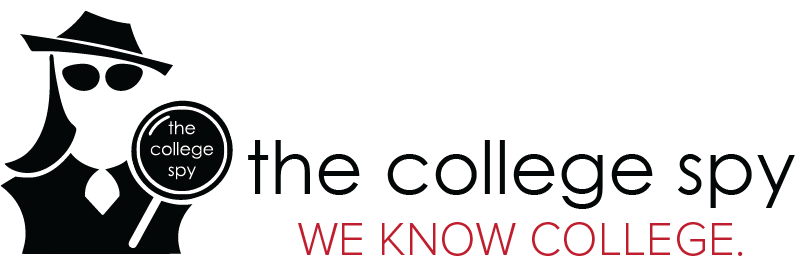Types of Federal Student Loans…Explained
/College students who apply for financial aid are likely to receive an aid package that includes at least some federal student loans. There are three types of federal loans that could be listed on the financial aid award: Direct Subsidized Loans, Direct Unsubsidized Loans and Direct PLUS loans. It is important to understand the differences between these three types of loans in order to decide if you want to accept them. The following is a brief explanation of each type of federal student loan.
Direct Subsidized Loans
Direct Subsidized Loans are given to students with financial need. The college chooses how much the student can borrow. The Department of Education pays the interest on a Direct Subsidized Loan while the student is in college (as long as the student is enrolled at least half-time), and continues to pay the interest during the six-month payment grace period which begins when the student graduates, leaves college, or drops below half-time enrollment and during any subsequent period of payment deferral. The fixed interest rate is currently 3.73% (for loans disbursed prior to July 1, 2022). There is also a loan fee of approximately 1%.
Direct Unsubsidized Loans
Direct Unsubsidized Loans can be given to any student, regardless of financial need. The college decides how much a student can borrow based on the cost of attendance and other financial aid awards the student received. Unlike Direct Subsidized Loans, students are responsible for the interest starting on the date the loan is disbursed, including while the student is enrolled in college. There is a six-month payment grace period following graduation, leaving college or dropping below half-time enrollment, but interest will continue to accrue during the grace period although no payments are due. The fixed interest rate is currently 3.73% (for loans disbursed prior to July 1, 2022). There is also a loan fee of approximately 1%.
Both Direct Subsidized Loans and Direct Unsubsidized Loans have loan limits. The maximum amount that can be borrowed changes each year the student is in college. The loan limit for the first year of college is $5,500, of which up to $3,500 can be in Direct Subsidized Loans. The loan limit for the second year of college is $6,500, of which $4,500 can be in Direct Subsidized Loans. During each of the third and fourth years of college, the loan limit is $7,500, of which $5,500 can be Direct Subsidized Loans.
To apply for a Direct Subsidized Loan or a Direct Unsubsidized Loan, students fill out the Free Application for Federal Student Aid (FAFSA). Colleges will use the information on the FAFSA to determine the student’s eligibility. The loan will be included in the student’s financial aid package and the college will indicate in the financial aid award letter what steps must be taken to accept these loans. Colleges will generally communicate directly with students on matters regarding financial aid, including federal student loans. At The College Spy, we recommend that parents and students have a system in place where the student forwards all emails regarding financial aid to the parent. Because parents are much more experienced with filling out forms and financial matters, they can serve as educators on these topics for their children.
Direct PLUS Loans
If the financial aid offered by the college will not cover the cost of attendance, parents might consider taking out a Direct PLUS Loan. Unlike either of the loan types discussed above, The Direct PLUS Loan is made by the Department of Education to the parent, not the student. The loan is not based on financial need and a credit check of the parent is required. Parents who have an adverse credit history will need to meet additional requirements to qualify for this type of loan. Students whose parents are not eligible for a Direct PLUS loan, may be able to get additional Direct Unsubsidized Loans and should contact the college’s financial aid office for more information. The interest on a Direct PLUS loan is currently fixed at 6.28% (for loans disbursed prior to July 1, 2022) and the loan fee is 4.228%. The maximum amount which may be borrowed under a Direct Plus Loan is the cost of attendance minus other financial aid awarded, including federal loans of the types discussed above. Non-custodial parents are eligible for a Direct PLUS Loan. Interest on Direct PLUS Loans accrues from the date of loan is disbursed and there is no applicable post-graduation grace period although parents may apply for a six-month deferral.
Paying for college can be daunting, especially for students who are not qualified for need-based financial aid and are not eligible for or do not want to take out student loans. The College Spy has the knowledge and resources to help students maximize their chances of receiving merit aid, which is not based on financial need. We work with families to make sure that their student’s college choice is a good fit overall, including a financial fit. For more information on working with The College Spy on college planning for your student, contact Michelle McAnaney at michelle@thecollegespy.com and ask about our free initial consultation.
Michelle McAnaney is the founder of The College Spy, a full service independent educational consulting firm that assists students and families across the US and internationally with the college selection and application process. Prior to founding The College Spy, Michelle was a guidance counselor and educator for more than 15 years, including serving as the Director of Guidance at two high schools, an adjunct college professor and a GED tutor. Michelle holds a master’s degree in school counseling and a bachelor’s degree in human development. She completed UC Irvine’s certificate program in educational consulting and is a MBTI (Myers-Briggs Type Indicator) Certified Practitioner and a NLP (Neuro-Linguistic Programming) Master Practitioner. Michelle visits over 40 colleges each year so that she has first-hand knowledge of the colleges and universities her clients will be considering. You can find her on Facebook, Twitter, Instagram, LinkedIn.





